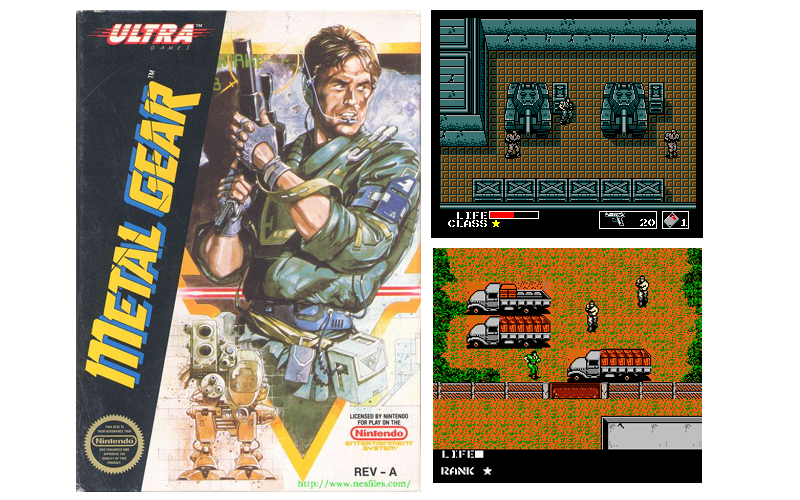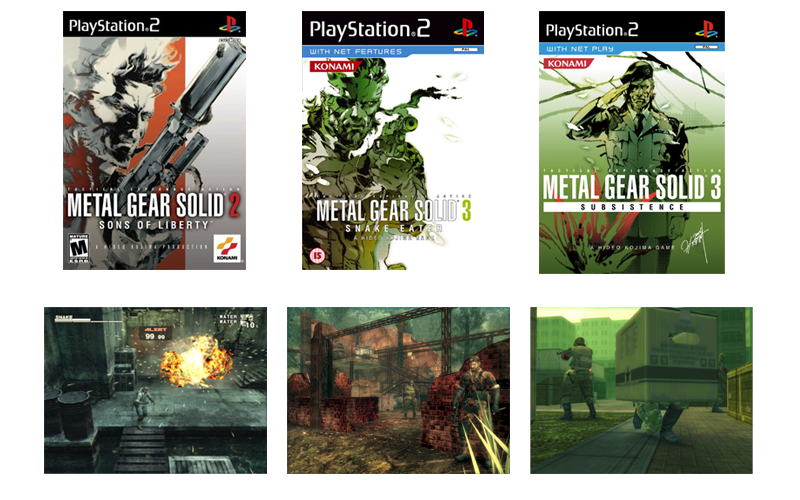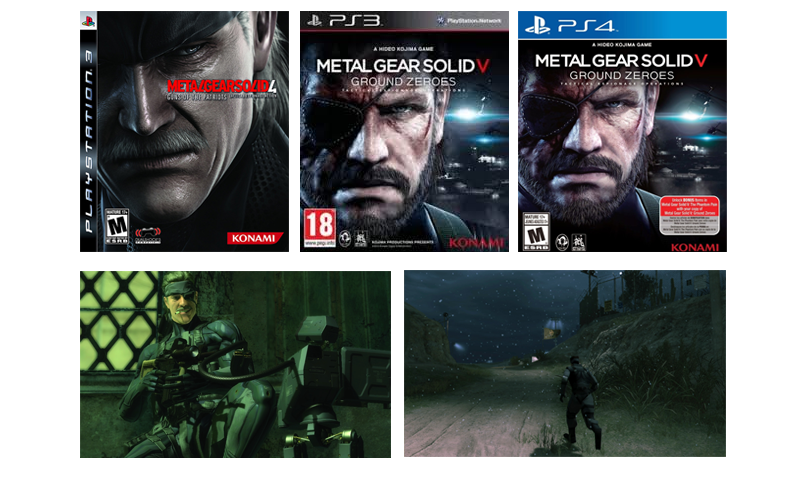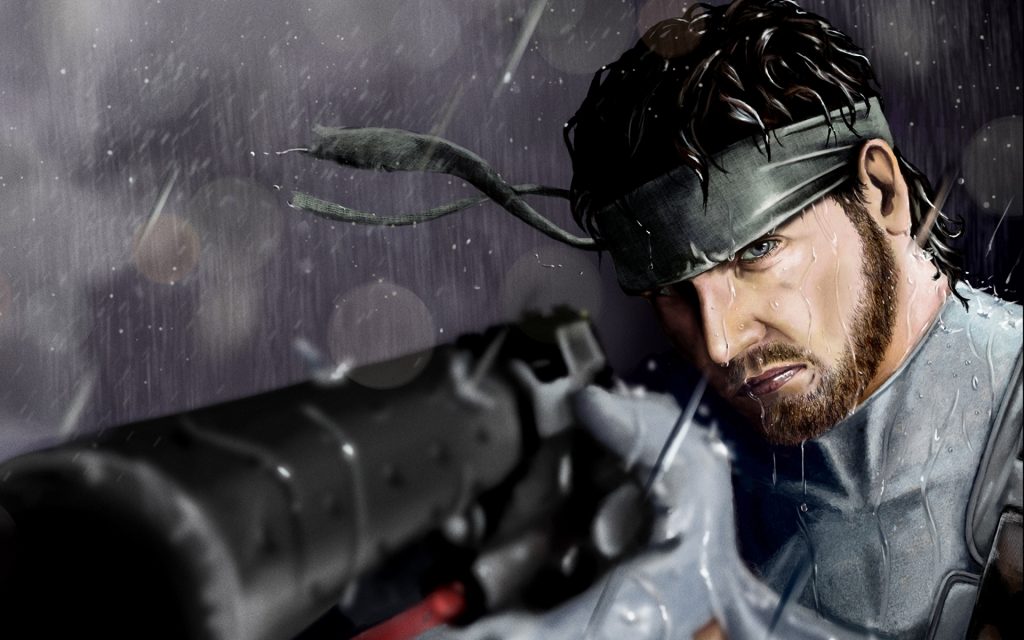Few series within the video game canon have touched the industry and gamers like the Metal Gear franchise has. One might even say that it helped to fully establish the Sony brand of consoles, in addition to sparking the imaginations of future game developers worldwide. Throughout it all however, the basic formula has remained the same – it all boils down to complex stories laid down in increments amidst very appealing level design in the context of excellent stealth-based gameplay. Pretty much every game in the series follows this basic format, with few exceptions.
Technically speaking, the franchise emerged on the NES first, but in all honesty it didn’t really hit its stride until making its way onto the PS1 (Metal Gear Solid). It was here that the intricate nature of the series’ future trademark multi-layered story / inventive combat and action was fully-formed. Obviously, this is because the various concepts that creator Hideo Kojima wanted to explore and incorporate simply weren’t possible to pull off with more simplistic graphical systems. To really paint the right kind of picture the ability to immerse the gamer in realistic sounds and more properly textured environments was definitely needed. Moreover, the way stealth fit into the game is what ultimately made it appealing, adding that extra bit of challenge and allure to help it rise above the standard shooter. The addition of various unique and intimidating bosses (each one with a little bit more of the story to dispel), simply pushed things to the next level, adding a certain character that’s extremely visceral to say the least.
 Mving on through to Metal Gear Solid 2: Sons of Liberty, we saw the ante being upped once again. With better graphics, more gameplay nuances and an equally convoluted storyline that takes you on a mind-bending journey, this entry full cemented MGS as a true institution in a lot of gamer’s minds. Lots of devout fans were no doubt wondering how they’d top the success of MGS1, or even how the core experience might be evolved without losing the same sort of impact found in the first major entry. Just looking at historical sales figures, it seems that they definitely found a way to achieve their goals.
Mving on through to Metal Gear Solid 2: Sons of Liberty, we saw the ante being upped once again. With better graphics, more gameplay nuances and an equally convoluted storyline that takes you on a mind-bending journey, this entry full cemented MGS as a true institution in a lot of gamer’s minds. Lots of devout fans were no doubt wondering how they’d top the success of MGS1, or even how the core experience might be evolved without losing the same sort of impact found in the first major entry. Just looking at historical sales figures, it seems that they definitely found a way to achieve their goals.
Avoiding mention of the various ports and adaptations developed between the release of MGS2 and the next entry in the series, we come to a game that many feel is still their best offering – Metal Gear Solid 3: Snake Eater. Building upon the technologies employed in Sons of Liberty, Snake Eater simply took things to a whole new level while simultaneously placing gamers in the past. In fact, one might argue that it was MGS3 that ignited the tendency of developers to explore the concept of the “prequel” in lieu of moving forward on a timeline. Certainly one of the hallmarks of any MGS game is that it will often find a way to actually touch you on an emotional level, but MGS3 took this idea to a whole new level, the end of the game providing a darkly poignant, yet ultimately heartrending conclusion that’s satisfying.
 With the emergence of Metal Gear Solid 4: Guns of the Patriots, we see the more modern iteration of the series starting to take shape. This particular game helped to propel PS3 sales forward, actually and there’s no disputing (especially considering all the critical praise it has received) that it is truly a wonderful game. MGS4 also took things a different direction by formally switching the view to an over-the-shoulder 3rd person perspective (with the ability to go into first-person mode). Add to this the seriously updated graphics available courtesy of the PS3 and you have a title that basically reinvented the wheel for the series without alienating hardcore fans (not an easy task to accomplish). Various other spin-offs have landed following MGS4’s release, including iterations for virtually every platform out there. To see a full list of everything MG, click here.
With the emergence of Metal Gear Solid 4: Guns of the Patriots, we see the more modern iteration of the series starting to take shape. This particular game helped to propel PS3 sales forward, actually and there’s no disputing (especially considering all the critical praise it has received) that it is truly a wonderful game. MGS4 also took things a different direction by formally switching the view to an over-the-shoulder 3rd person perspective (with the ability to go into first-person mode). Add to this the seriously updated graphics available courtesy of the PS3 and you have a title that basically reinvented the wheel for the series without alienating hardcore fans (not an easy task to accomplish). Various other spin-offs have landed following MGS4’s release, including iterations for virtually every platform out there. To see a full list of everything MG, click here.
Finally, we come to Metal Gear Solid V, which is being offered on both (current) 8th as well as 7th generation consoles and has been split up into two installments. We’ve already seen the first released, MGSV: Ground Zeroes, which is for all intents and purposes a very fun interactive demo that seeks to familiarize players with the way its successor will function. The gameplay is just what the doctor ordered – tight, realistic, very stealth-oriented and just challenging enough to keep things interesting. Visually it’s spectacular of course, providing great graphics and lighting effects. At the same time, this mini-installment introduces key characters and plot concepts which will no doubt be endlessly elaborated on once The Phantom Pain hits store shelves.
 In short, one could argue that the MGS series in fact encapsulate a microcosm of modern game development. To put it bluntly – it’s pretty much rose in tandem with both increasing technology and development trends, which places it in a very unique class. Here’s to another decade of potentially mind-blowing releases from Kojima and company.
In short, one could argue that the MGS series in fact encapsulate a microcosm of modern game development. To put it bluntly – it’s pretty much rose in tandem with both increasing technology and development trends, which places it in a very unique class. Here’s to another decade of potentially mind-blowing releases from Kojima and company.
This post didnt have a specific author and was published by PS4 Home.


7 Comments
Aww. Seeing the 2D game takes me back. I think it’s just too much fun to play. Get in the old boxes and looking for something NES!
Such fun to take a look at Metal Gear Solid. IT’s truly transformed over the years.
I love even seeing the game covers evolve. Real great material here on PS4.
I love even seeing the game covers evolve. Real great material here on PS4.
I wish I had given this one a try back in the day. #GamingRegrets
Metal Gear looks like a fun comparison piece on the gaming world. How do you think they do it? I love the MGS series.
I really LOVE the latest installments of MGS. Fun to play. Thrill to explore.